7 Things You Need to Know Before Installing a Hen House
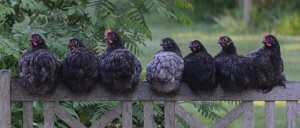
If you’re thinking about buying or building a hen house in your garden, there are a few things you need to know before you get started. Buying and keeping chickens is no easy task, and you need to be prepared to take on all the costs and responsibilities that come with them. In this article, we’ll tell you everything you need to know.
1. Check local legislation
Every country has a different set of laws and legislation when it comes to the keeping of chickens. In Spain, for example, a Royal Decree lays out a set of rules for the care and protection of laying hens. This decree specifies the species, enclosure requirements, and the conditions the animals should be kept in.
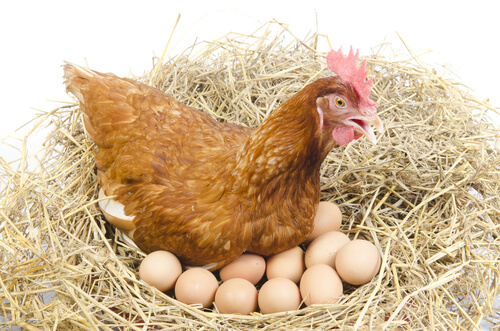
It’s very important to read up on all the different laws that are in place in your area. Keeping domestic birds in an environment that doesn’t meet the legal requirements could land you with a fine. Plus, these laws can change regularly, so you need to stay up-to-date.
2. Make sure you have enough space for your hen house
Before you build a hen house in your garden, you need to measure the available space. Hen houses come in a range of different shapes and sizes: square, rectangular, round.
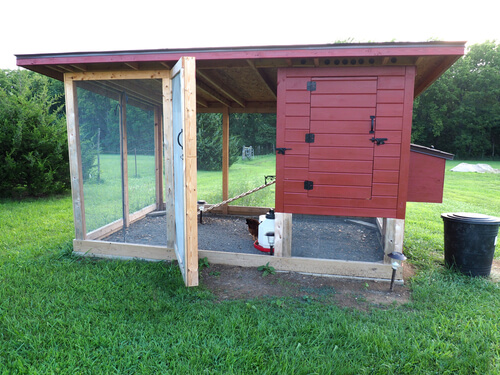
Install as big a hen house as your garden will allow. You can buy them pre-made, or make one yourself. You’ll also need to measure out a space where your hens will be able to go out and walk around in the fresh air. This is essential for both their mental and physical health.
3. Think about the climate in your region
If your hen house is out in the open, make sure it can withstand all weather conditions. Rain, wind, heat, damp and cold are likely to damage it over time.
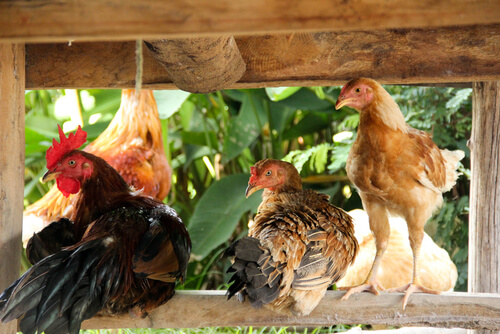
If you live in a particularly cold climate, you’ll need to make sure it will keep your hens nice and warm during the coldest months. Similarly, if you live in a hot climate, you’ll need to make sure your hens have somewhere they can stay cool.
4. Budgeting for your hen house
If you’re buying a pre-made hen house, you simply need to install it in your garden. However, if you’re planning on building your own from scratch, you’ll need to budget for all the different materials you’ll need. Needless to say, the cost will vary depending on the materials you want to use, and the size of your hen house. Both building and buying are great options, so you can simply choose the one that suits you best.
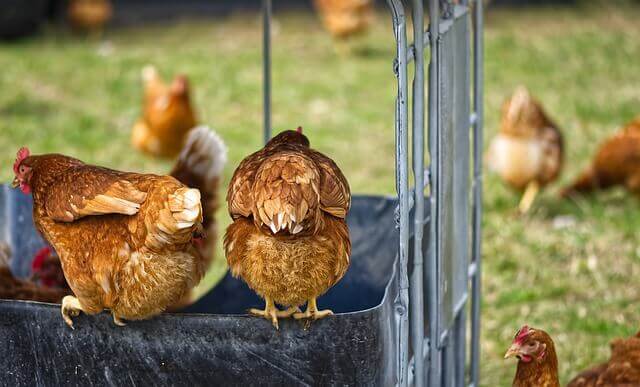
Here are some of the materials most commonly used for building hen houses:
- A strong, hard-wearing material to form the base of your structure: galvanized steel, PVC or treated wood. It’s also important to make sure the roof is waterproof.
- Chicken wire: to form the sides of the enclosure.
- Perches: placed at an easily accessible height for your hens.
- Nesting material: choose a comfortable and disposable material that will keep the eggs warm. Straw or pine needles are great options.
- Nest boxes.
- Flooring material: it’s best to use a disposable material such as wood shavings.
- Food and drinking troughs.
5. Hen house interior design
Once you’ve chosen your hen house, you’ll need to do a bit of interior design. This is where your hens will sleep and lay eggs, and it should be a place they feel safe, warm and comfortable, with plenty of space to move around. The nesting area should be big enough that there at least 4.5 square inches of space for every four hens. The floor should be raised off the ground to prevent it from getting damp.
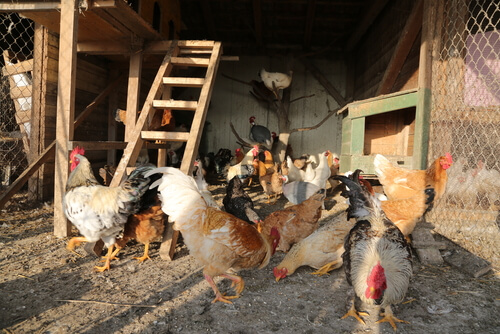
6. Do some research into the different hen breeds
Before you start building your hen house, you’ll need to think about what type of chickens you actually want. Hens come in a variety of different breeds, each of a different size, and with different feathering and temperament. You can buy native or exotic breeds, egg-laying hens and free-range hens, as well as a variety of cross-breeds. Buying chickens is expensive, so you’ll need to include the cost in your initial budget.
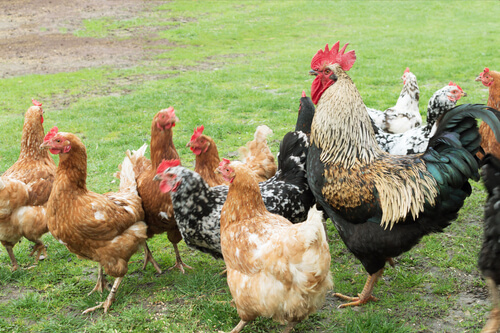
7. Calculate your monthly costs
But the hen house and hens aren’t the only things you’ll need to budget for. Needless to say, your hens will need daily food and water, and the hen house will need regular cleaning and maintenance to keep it in good condition. Plus, your hens will also need check-ups at the vet to make sure they’re in good health.
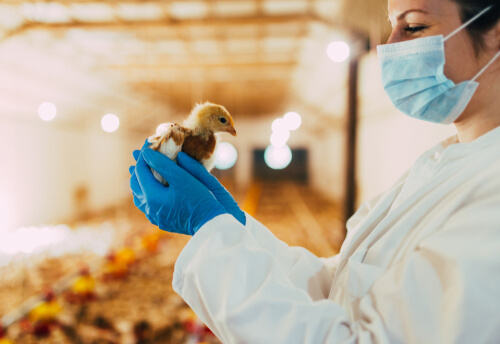
But there aren’t only financial costs to take into account: looking after hens will require a great deal of time and dedication. Just like any animal, chickens need daily care and attention. You’ll need to check on them every day to make sure they’re healthy, check they’re eating well, if they’ve laid eggs etc.
If you’re thinking about buying or building a hen house in your garden, there are a few things you need to know before you get started. Buying and keeping chickens is no easy task, and you need to be prepared to take on all the costs and responsibilities that come with them. In this article, we’ll tell you everything you need to know.
1. Check local legislation
Every country has a different set of laws and legislation when it comes to the keeping of chickens. In Spain, for example, a Royal Decree lays out a set of rules for the care and protection of laying hens. This decree specifies the species, enclosure requirements, and the conditions the animals should be kept in.

It’s very important to read up on all the different laws that are in place in your area. Keeping domestic birds in an environment that doesn’t meet the legal requirements could land you with a fine. Plus, these laws can change regularly, so you need to stay up-to-date.
2. Make sure you have enough space for your hen house
Before you build a hen house in your garden, you need to measure the available space. Hen houses come in a range of different shapes and sizes: square, rectangular, round.

Install as big a hen house as your garden will allow. You can buy them pre-made, or make one yourself. You’ll also need to measure out a space where your hens will be able to go out and walk around in the fresh air. This is essential for both their mental and physical health.
3. Think about the climate in your region
If your hen house is out in the open, make sure it can withstand all weather conditions. Rain, wind, heat, damp and cold are likely to damage it over time.

If you live in a particularly cold climate, you’ll need to make sure it will keep your hens nice and warm during the coldest months. Similarly, if you live in a hot climate, you’ll need to make sure your hens have somewhere they can stay cool.
4. Budgeting for your hen house
If you’re buying a pre-made hen house, you simply need to install it in your garden. However, if you’re planning on building your own from scratch, you’ll need to budget for all the different materials you’ll need. Needless to say, the cost will vary depending on the materials you want to use, and the size of your hen house. Both building and buying are great options, so you can simply choose the one that suits you best.

Here are some of the materials most commonly used for building hen houses:
- A strong, hard-wearing material to form the base of your structure: galvanized steel, PVC or treated wood. It’s also important to make sure the roof is waterproof.
- Chicken wire: to form the sides of the enclosure.
- Perches: placed at an easily accessible height for your hens.
- Nesting material: choose a comfortable and disposable material that will keep the eggs warm. Straw or pine needles are great options.
- Nest boxes.
- Flooring material: it’s best to use a disposable material such as wood shavings.
- Food and drinking troughs.
5. Hen house interior design
Once you’ve chosen your hen house, you’ll need to do a bit of interior design. This is where your hens will sleep and lay eggs, and it should be a place they feel safe, warm and comfortable, with plenty of space to move around. The nesting area should be big enough that there at least 4.5 square inches of space for every four hens. The floor should be raised off the ground to prevent it from getting damp.

6. Do some research into the different hen breeds
Before you start building your hen house, you’ll need to think about what type of chickens you actually want. Hens come in a variety of different breeds, each of a different size, and with different feathering and temperament. You can buy native or exotic breeds, egg-laying hens and free-range hens, as well as a variety of cross-breeds. Buying chickens is expensive, so you’ll need to include the cost in your initial budget.

7. Calculate your monthly costs
But the hen house and hens aren’t the only things you’ll need to budget for. Needless to say, your hens will need daily food and water, and the hen house will need regular cleaning and maintenance to keep it in good condition. Plus, your hens will also need check-ups at the vet to make sure they’re in good health.

But there aren’t only financial costs to take into account: looking after hens will require a great deal of time and dedication. Just like any animal, chickens need daily care and attention. You’ll need to check on them every day to make sure they’re healthy, check they’re eating well, if they’ve laid eggs etc.
All cited sources were thoroughly reviewed by our team to ensure their quality, reliability, currency, and validity. The bibliography of this article was considered reliable and of academic or scientific accuracy.
- Ministerio de Agricultura, Pesca y Alimentación. (2002). Real Decreto 3/2002, de 11 de enero, por el que se establecen las normas mínimas de protección de las gallinas ponedoras. Recuperado el 16 de agosto de 2022, disponible en: https://www.boe.es/buscar/pdf/2002/BOE-A-2002-831-consolidado.pdf
- Gautier, Z. (2002). “Gallus gallus” (On-line), Animal Diversity Web. Recuperado el 16 de agosto de 2022, disponible en: https://animaldiversity.org/accounts/Gallus_gallus/
This text is provided for informational purposes only and does not replace consultation with a professional. If in doubt, consult your specialist.








